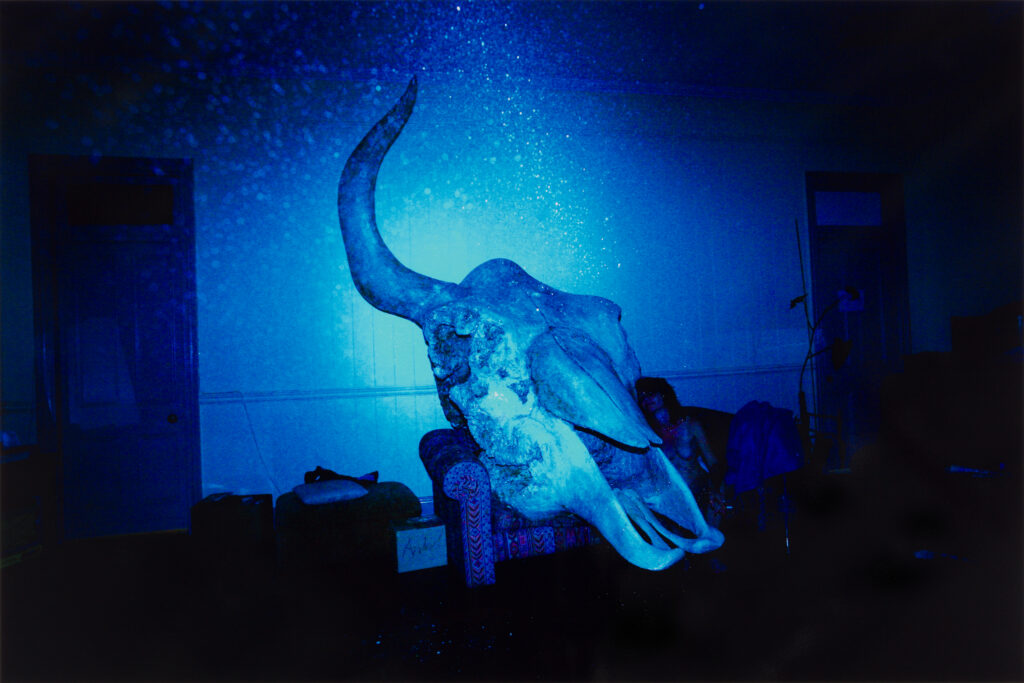Lieko Shiga on Kitakama village and the 2011 tsunami
Lieko Shiga—Spiral Shore
March 2016
Lieko Shiga: The reason I moved to Kitakama village wasn’t simply because it was there. I had come to think that maybe when I found a captivating subject, the first thing I needed to do was to immerse myself in its surroundings and live alongside it, before I began shooting. My journey led me to the ocean, and I found this beautiful pine forest. I thought I wanted to live there. That’s how I ended up there.
During my first year as the village photographer I documented many activities, festivals, and ceremonies. Then one day an old lady knocked on my studio door. She asked me to take a picture of her for her funeral. I sensed her words carried a strong emotion, so I said yes. When she fixed her gaze on me and my camera, I realized there was something in Kitakama that I had to pursue. Although photography is a visual art, I thought that maybe photos could actually portray a world we could not see with the naked eye. Perhaps the spirit or the history of Kitakama—something that we could not see, the thing that brought this community together, the big picture. If that is the case, I wanted to approach and capture the invisible spirit of the village with my camera.
I have a piece called Portrait of Cultivation in my Spiral Shore series. The land of Kitakama wasn’t always residential; and it used to be covered with big pine forests. But people cultivated the land. They used their bare hands to dig up pine trees and build homes and farmlands. One of the elders explained to me in depth how hard it was to cultivate with nothing but their hands. I couldn’t physically understand how hard it really was, so I decided to dig up a pine tree with some people. The stump was very tiny, but as we began digging, I found its great, thick roots reached deep into the ground. I was very surprised. The father of the elder who had told me that story had been the leader of the cultivation. I felt like I met his father’s bones. I was excited, so I went to visit the elder. I asked if he would allow me to photograph him with the roots I dug up. I was very surprised. Each and every photo from the Spiral Shore series has a story of its own.
On March 11, 2011, Kitakama village was struck by earthquakes and a twelve-meter [forty-foot] tsunami. Its population used to be 370 people, about one hundred families. The record states that about fifty-four Kitakama villagers died in the earthquake disaster.
I used to live over there. Everybody lived in the same area. This house belongs to Mr. Suzuki, the director of the community center. He decided to preserve his house because he didn’t want everyone to forget that people used to live here. As you can see, a huge tsunami struck the ground floor and took the walls and everything in its way. The second floor remains fairly undamaged. This building shows how the tsunami struck.
This used to be the entrance to my studio in Kitakama. There used to be houses here, too. This is the debris of pine trees that were washed away. This is where my studio was in Kitakama. It was right here. It was a tiny trailer surrounded by pine trees in a secluded spot nestled right here. This is the beach at Kitakama. There was a pine forest all along the coast of Kitakama that went all the way to Fukushima. It was absolutely beautiful. The Fukushima Nuclear Power Plant is about eighty kilometers [fifty miles] from here.
I was in my car when the earthquake struck. I was on my way to the supermarket. The earthquake struck as I was driving past the railroad crossing, and I waited in my car for a while. I knew something was wrong, so I turned around to drive back to Kitakama. That’s when I saw the tsunami in front of me, so I turned back and escaped.
Spiral Shore 46 was taken exactly at this location. I drew images on the beach with a stick and shot pictures from a height. It took me two to three days to finish the photo shoot. Yeah, actually the Rasen Kaigan (Spiral Shore) pictures were taken before the tsunami and after the tsunami—so, fifty percent and fifty percent. It’s not strongly related to the tsunami. It’s strongly related to Kitakama village. But I cannot ignore the tsunami because the tsunami came. That’s the reality.
To me Spiral Shore encompasses the past, the present, and the future. I believe photography creates a space that has no past, present, or future—or that has all of them simultaneously. It’s completely different from the world we live in. I think its world is more like a universe. The name Spiral Shore also refers to the spiral of our DNA. If we trace the spiral, we can encounter the lives of the people before and after our time. That’s what I hoped to convey when I titled the series Spiral Shore.







